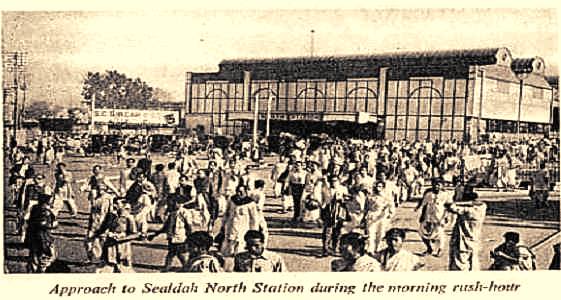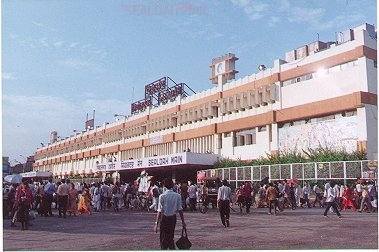

Right from the opening of EIR, the citizens of Calcutta pleaded and agitated for a bridge over the River Hooghly near Howrah and a Central Station in Calcutta. Initially neither the railway company nor the government obliged them because of the high cost of the bridge and the uncertainty of earning enough revenues from it.
The first line on the right bank of the Hooghly was a line southward from what was then called Beliaghata Station (Presently Sealdah – South Station) to Port Canning on the Matla river. It was laid by a private railway company called the Calcutta and South Eastern Railway (C. & S. E. Rly)

In 1862; Beliaghata ?
Subsequently as Calcutta spread, large areas south of the city started becoming populated and it became necessary to provide these new areas with railway communication. The lines radiating to Diamond Harbour (once the main port), Laksmikantapur, Canning and Budge Budge were known as south section.
Interestingly this part of Sealdah station was built close to the main station but at right angles to the main station.
A new north Sealdah station was built adjacent to main station to meet the needs of growing traffic to and from northern suburban areas.

In 1870s
The original Calcutta station, designed by Mr. Walter Glanville was built in
1869. This was the main station.
It was a daunting task to build a station building at the central business district of the city. The foundation of the main station had to be unusually deep, as much as 45 ft. below normal ground level due to the presence of many underground tanks or pits at the site. Some of the walls at that depth are 8 to 10 feet thick.
A six mile long approach embankment was constructed to bring the main line into the station. This was necessary to cross various roads and canals.
The station was renamed Sealdah after partition.

View of
Sealdah Station in the
late
twentieth century

Sealdah Station
before remodelling in 2002